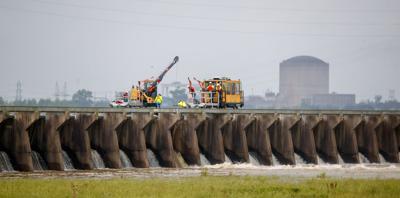The rising Mississippi River has prompted the Army Corps of Engineers and local officials to increase precautionary measures along levees from Baton Rouge to Venice, but it remains unclear if the for the first time since 2020.
The Corps announced that the river was expected to rise above 15 feet at the Carrollton gauge in New Orleans on Tuesday, which roughly translates to 15 feet above sea level. That triggered what the Corps calls a Phase II flood flight, necessitating daily patrols of levees to spot any seepage or other potential problems.
A spillway opening is triggered when the river flow reaches 1.25 million cubic feet per second, which tends to translate to around 17 feet on the Carrollton gauge. Current projections show the river cresting at around 16.5 feet on April 30 before beginning to fall, making a spillway opening possible.
The Corps ran a test opening of Bonnet Carre on Monday in preparation for the possibility.
A Phase I flood fight began on April 14, when the river hit 11 feet on the Carrollton gauge. That meant twice-weekly inspections of the levee system.
During Phase I, all subsurface construction within 1,500 feet of the river levees must be suspended unless a waiver is granted by the Corps and the local levee district. Under Phase II, all waivers are suspended.


